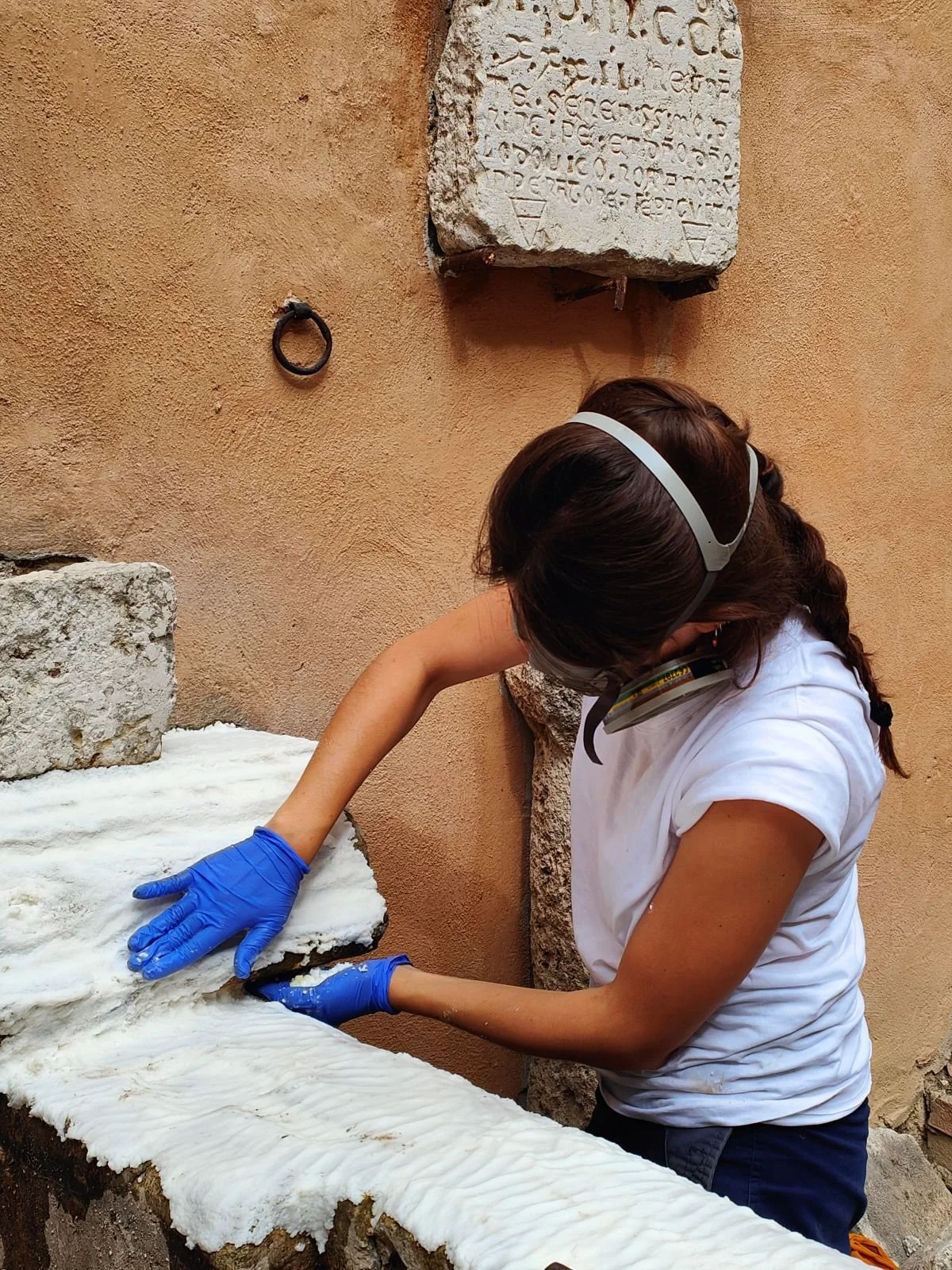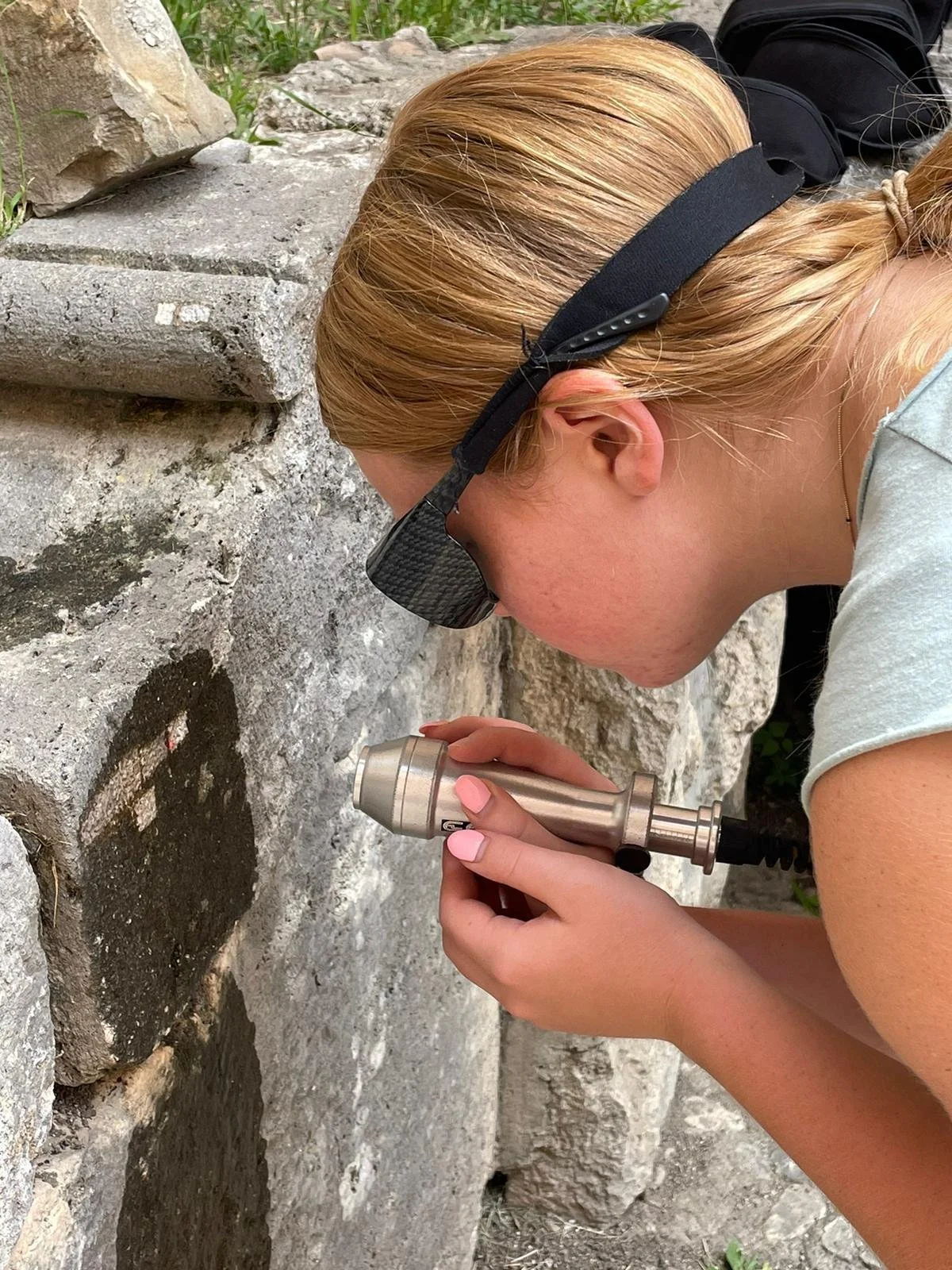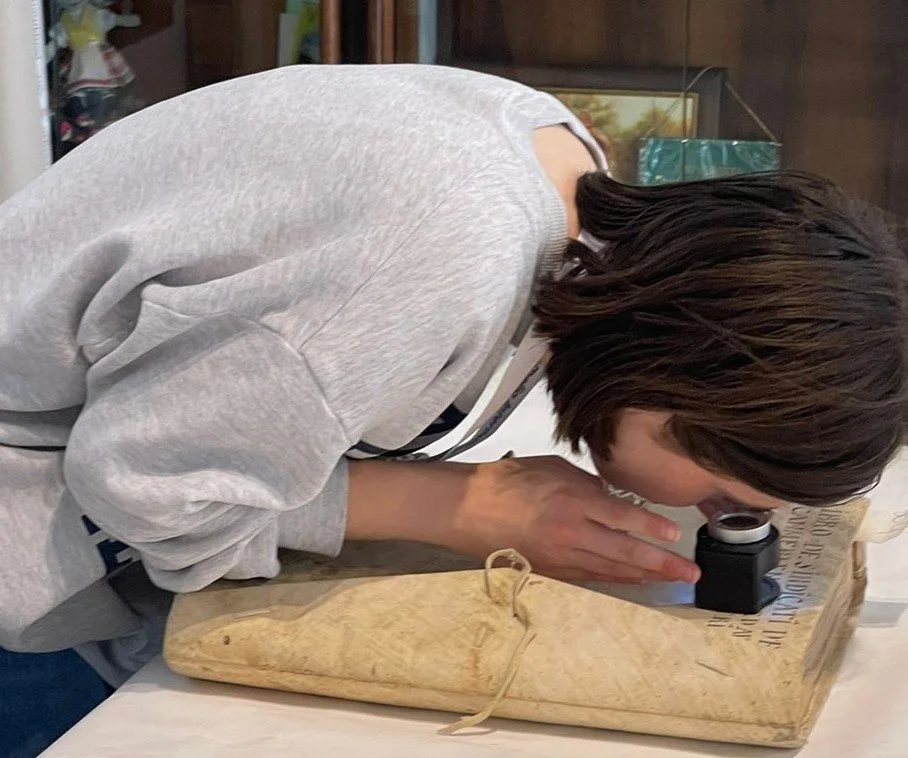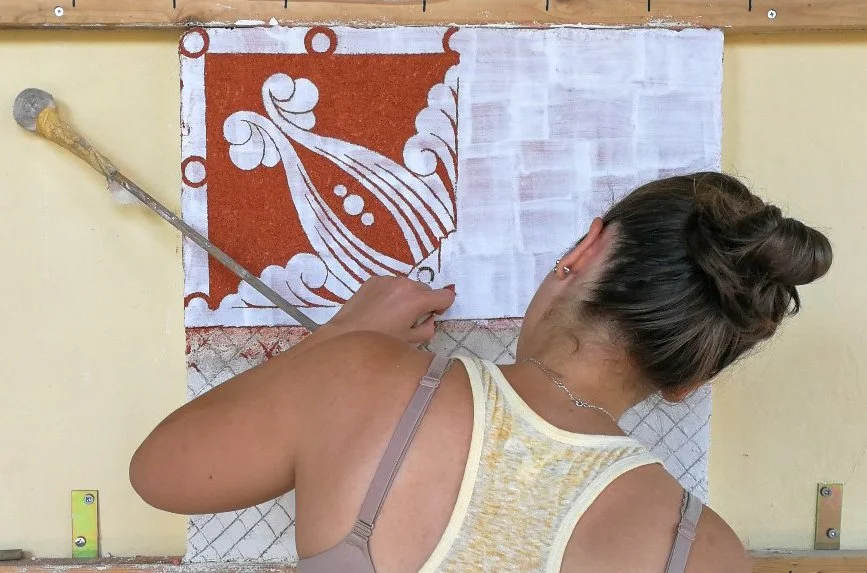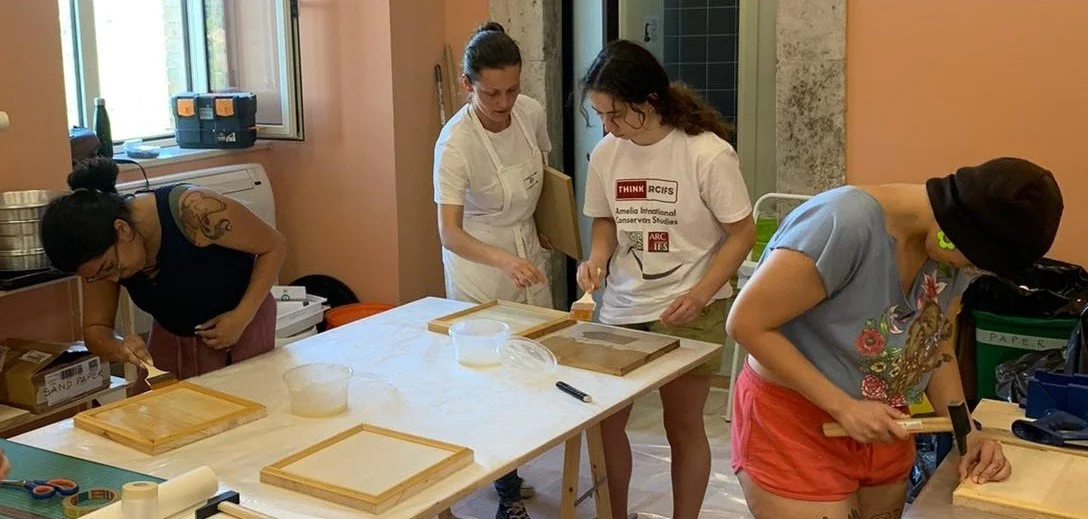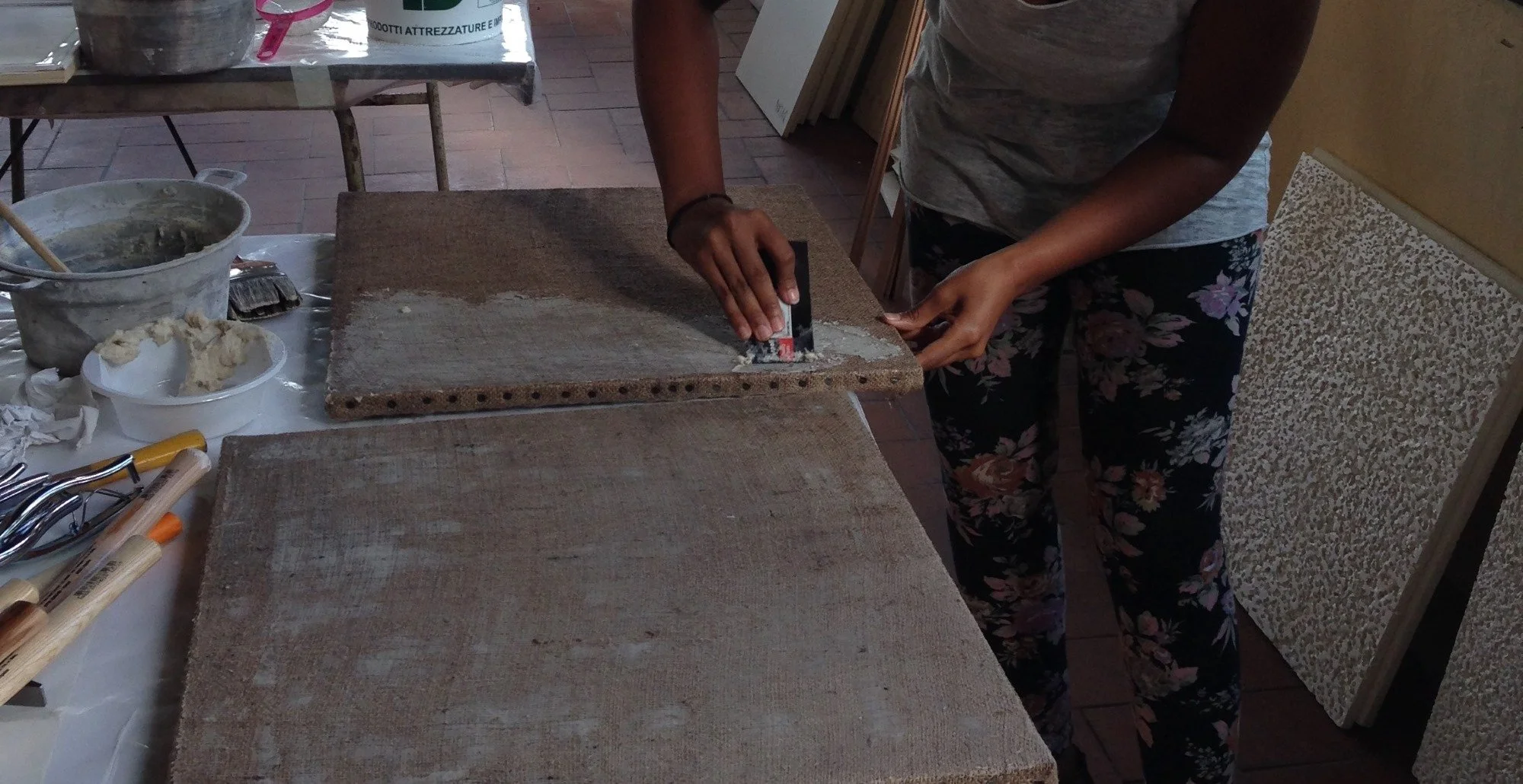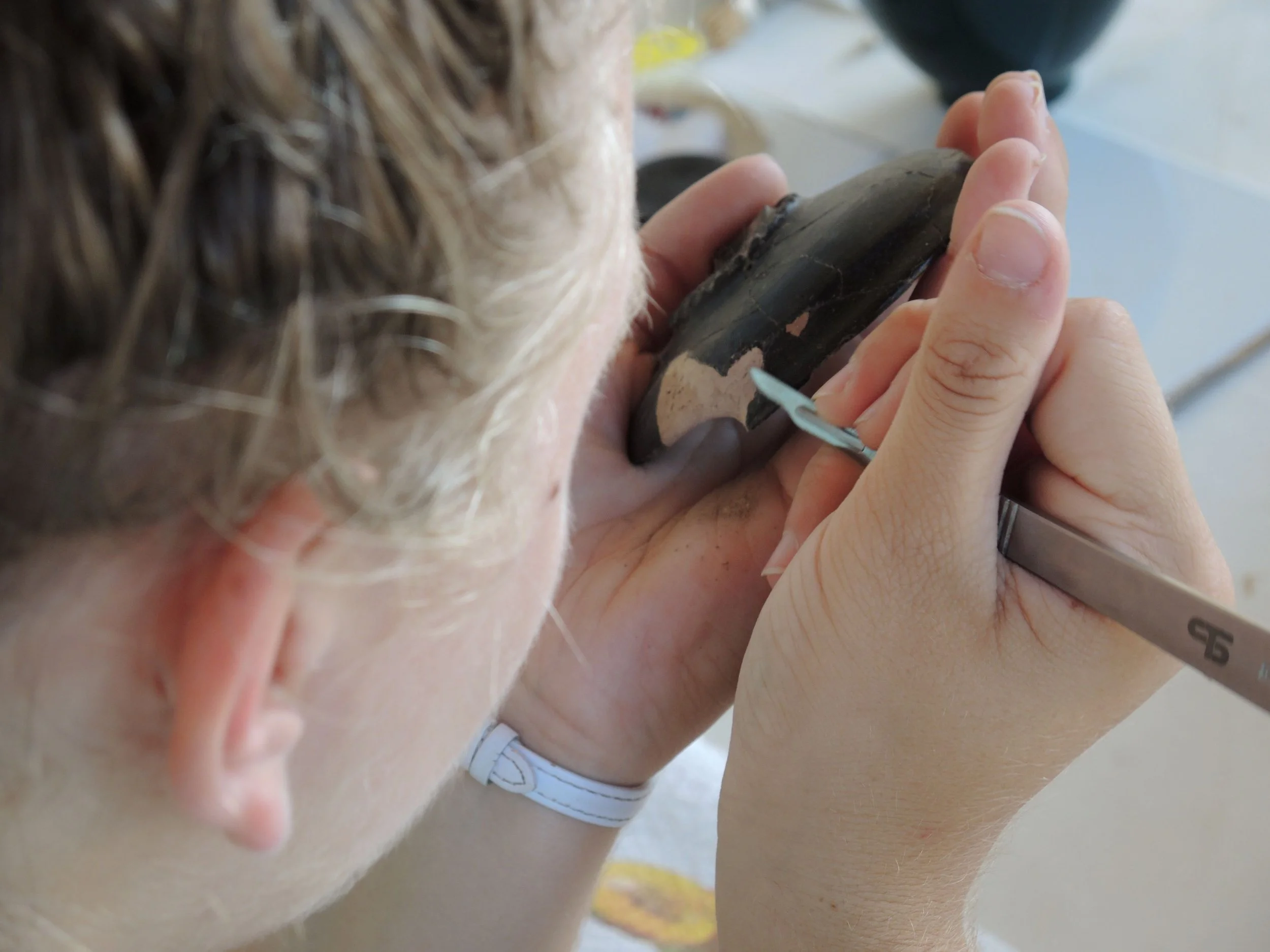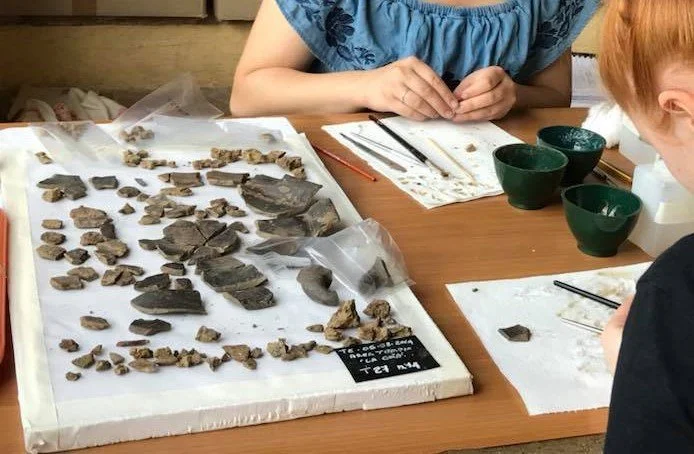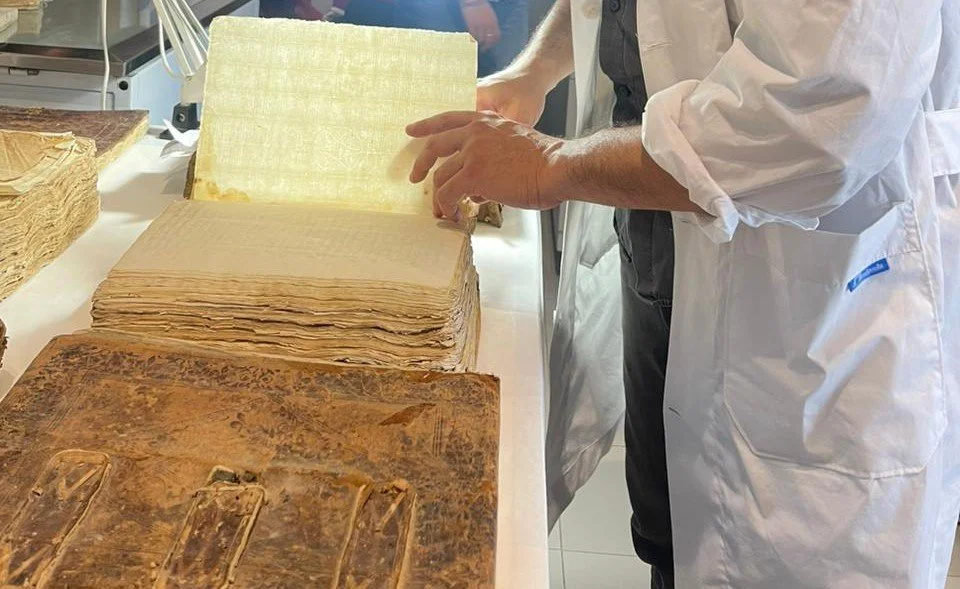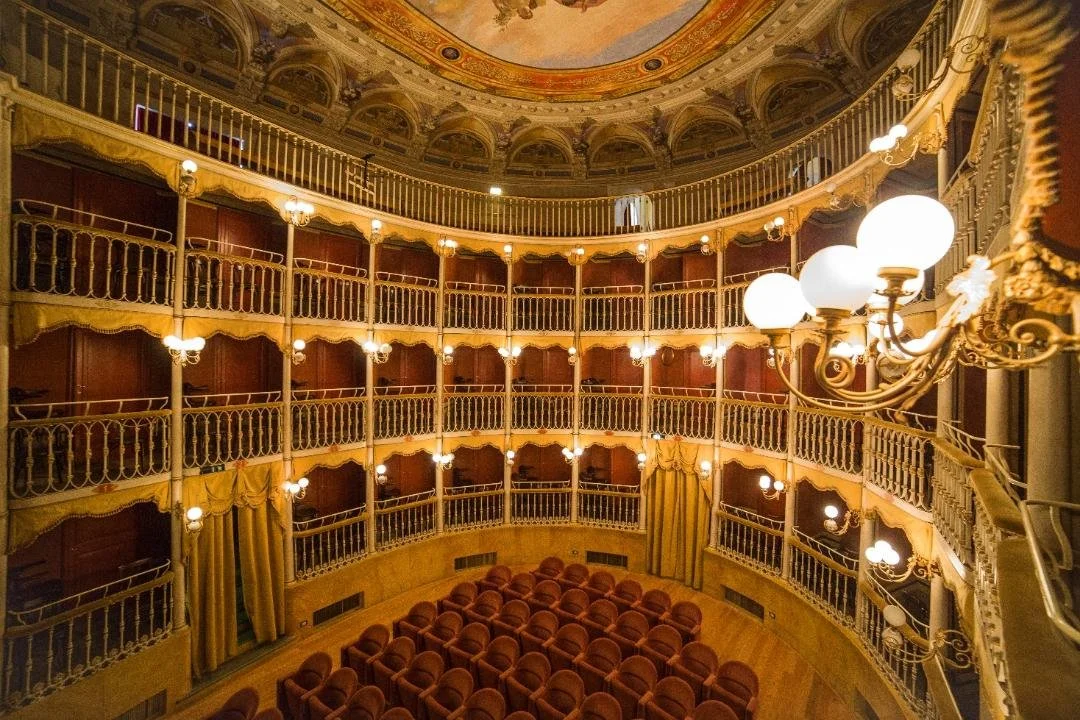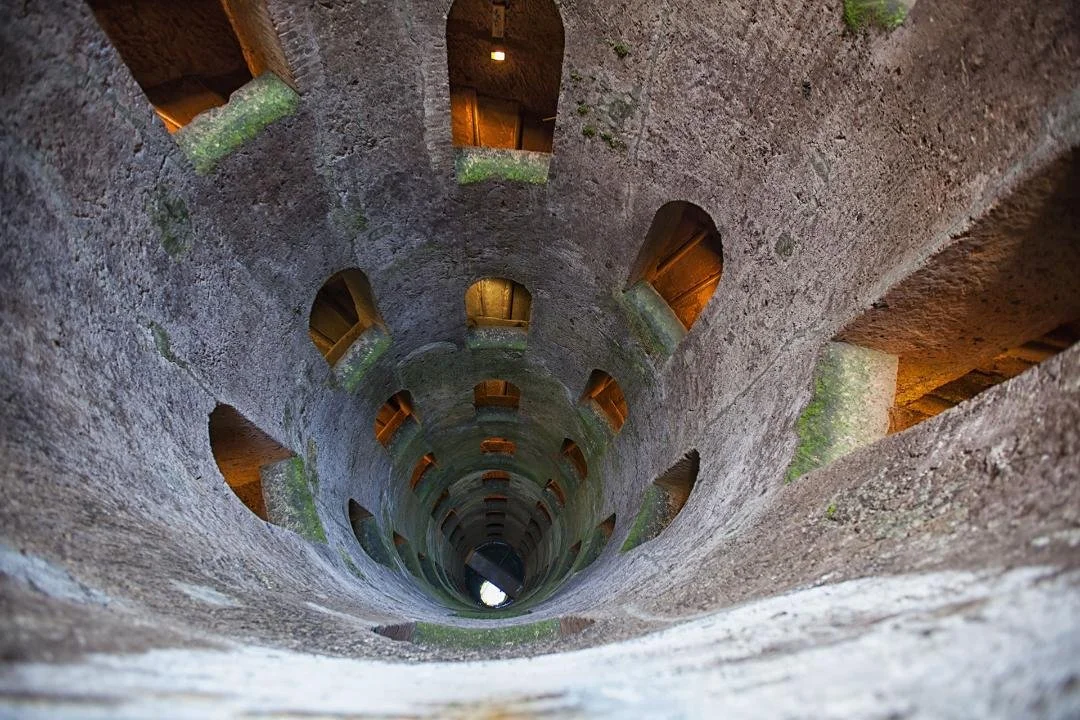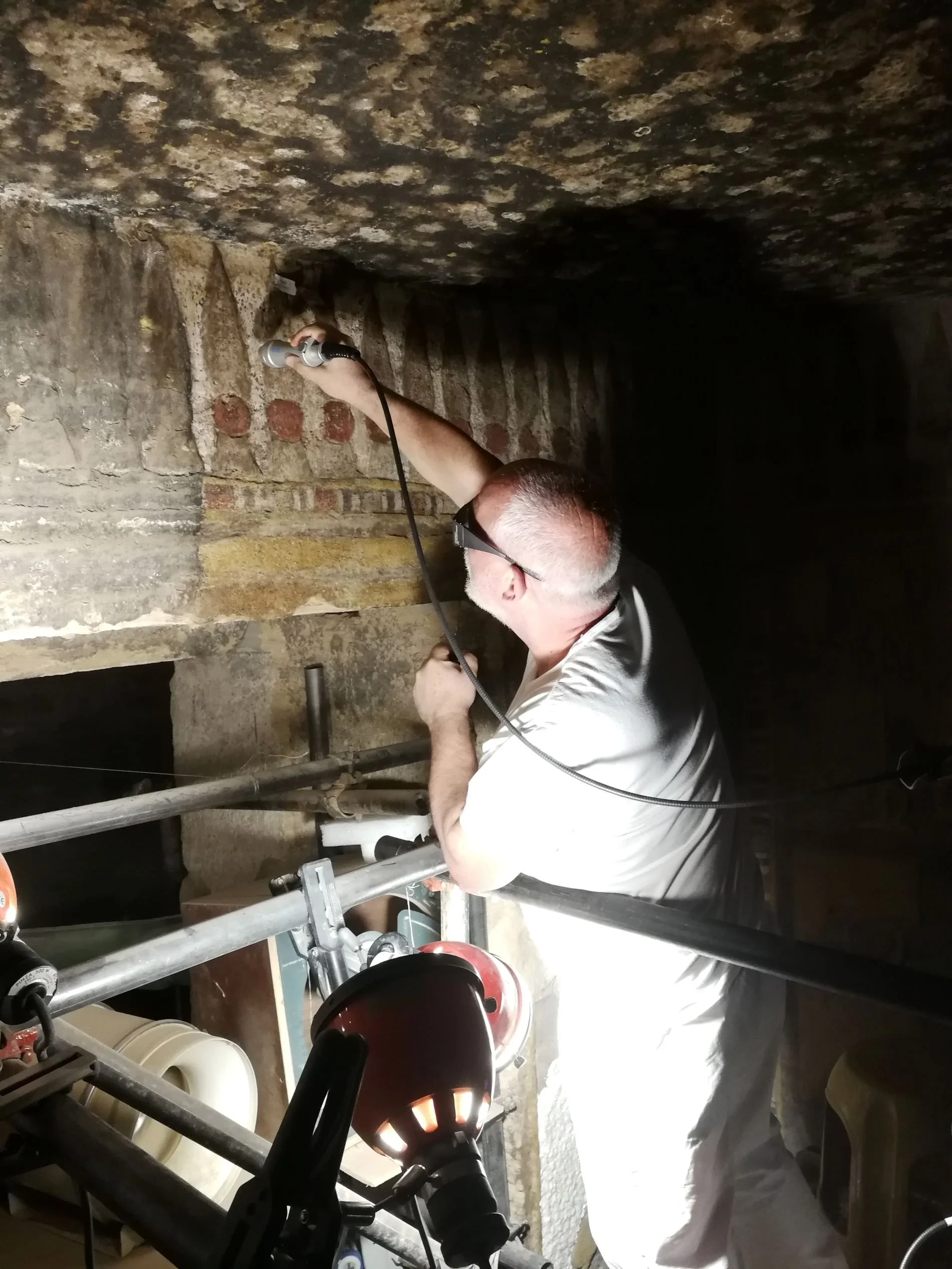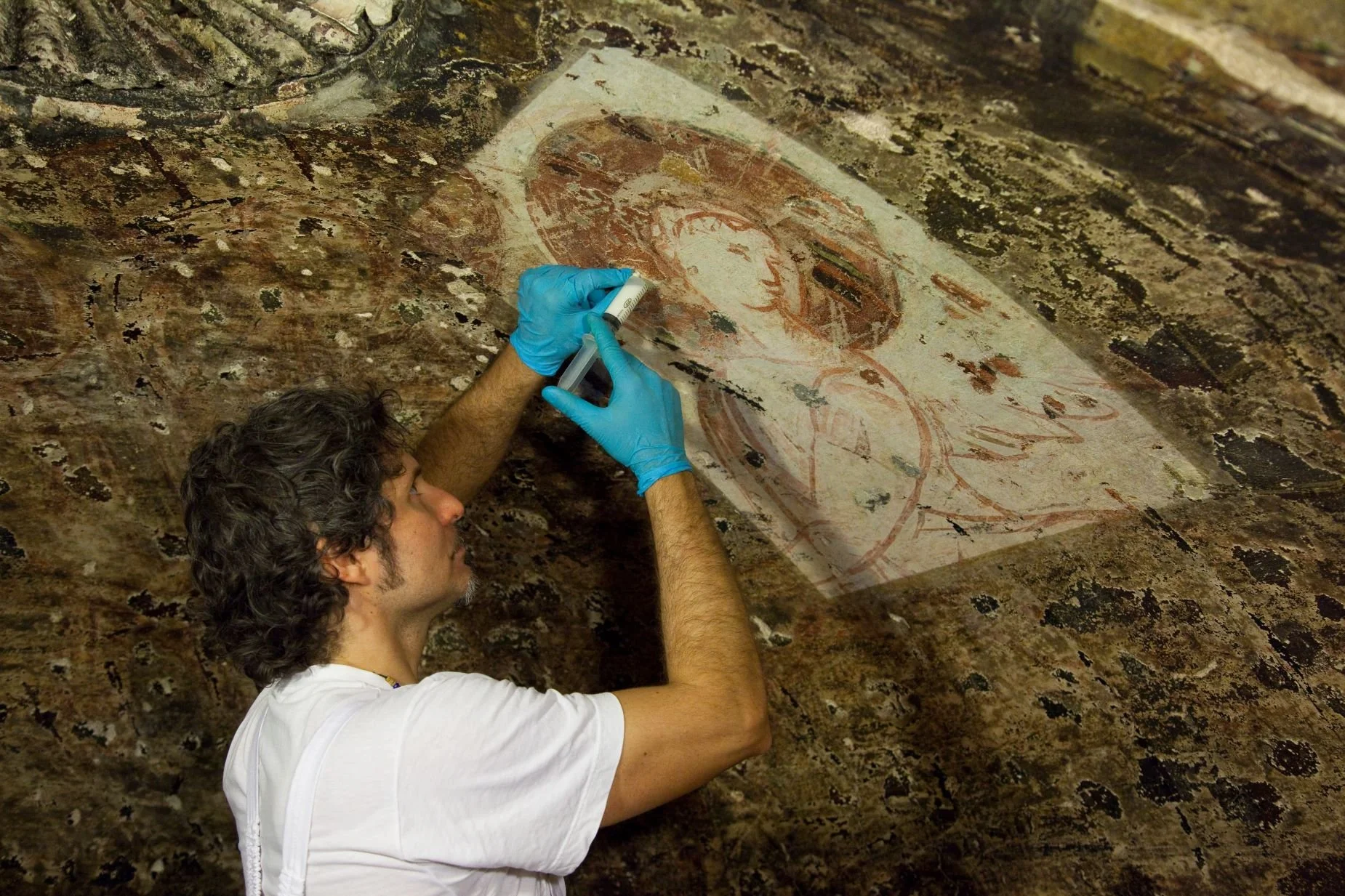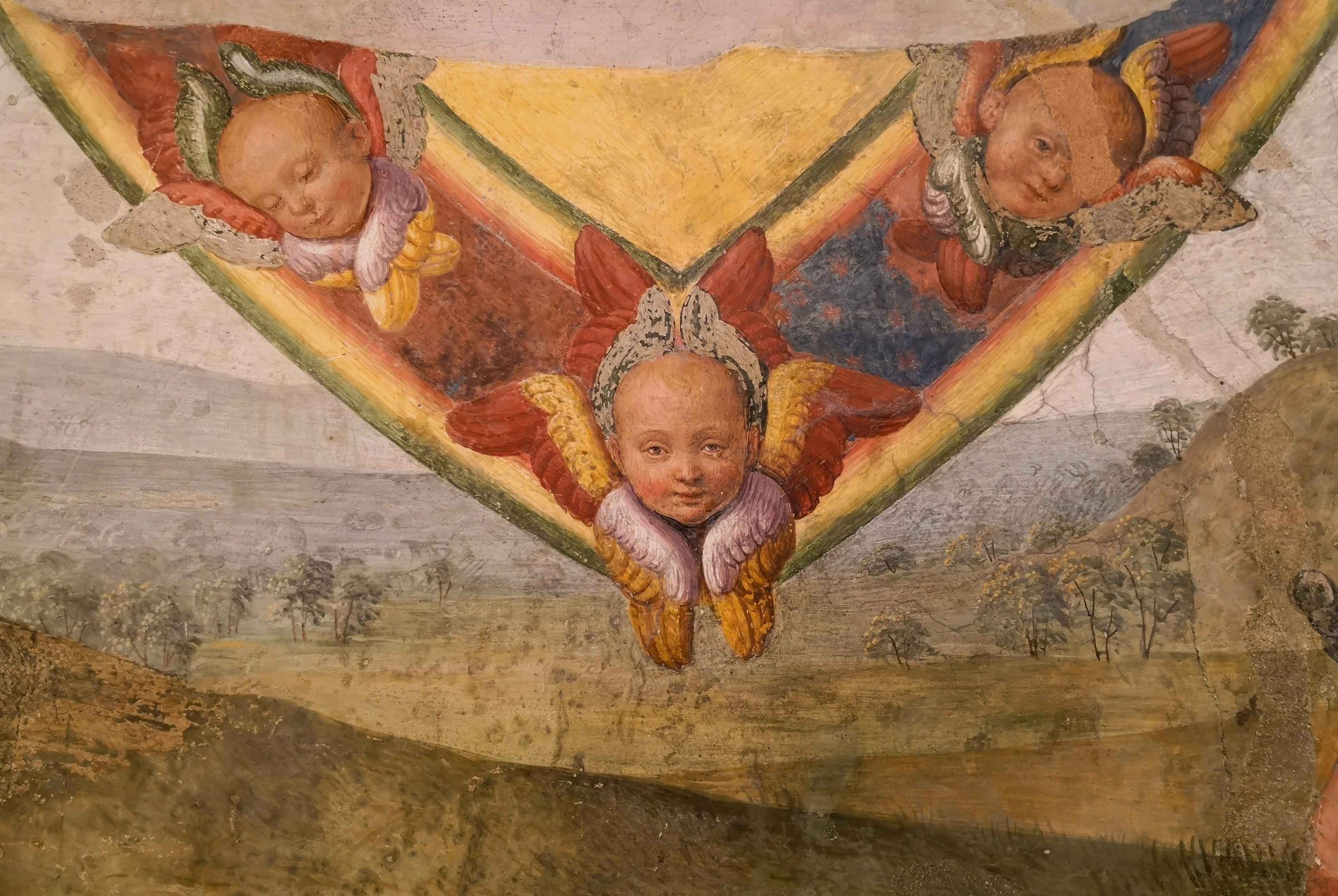
Amelia International Conservation Studies
Program A, Description
Amelia International Conservation Studies
June 9 - July 4, 2025
Amelia, Italy
This course introduces students to restoration of natural and stones derivatives / artificial stone surfaces in Italian historic monuments. Through lectures and hands-on workshops, it explores traditional materials and techniques used to create monuments and artwork integral to their structure. It also examines the various agents of deterioration that, over time, damage the materials and the different approaches to their restoration and conservation. Furthermore, the course offers opportunities to explore, along with the most common restoration techniques, an advanced technique, such as laser cleaning.
The course investigates traditional monuments materials including natural stones and different types of traditional mortars. The objectives for this course are to introduce students planning a career in restoration to the field, and to offer a useful overview of the process and problematic examples of restoration to students involved in other aspects of the process of conservation and historic preservation. This course is aimed at students of restoration and conservation, historic preservation, architecture, art, art history, cultural history, engineering, anthropology, archaeology and museum studies.
Program B, Description
Amelia International Conservation Studies
June 9 - July 4, 2025
Amelia, Italy
In this course, students will learn the practical skills and techniques used in the restoration and preservation of paper-based artworks and archives. Through hands-on demonstrations and lectures, participants will get an in-depth understanding of the history of paper, paper-care basics, and the different restoration methods and materials suitable for different types of paper-based items.
By the end of the course, students will have gained an in-depth knowledge about paper restoration techniques for artworks and archives.
They will have developed the practical skills to explore and solve issues related to the damages in paper-based items. Participants can expect to gain expertise in the use of conservation materials and have an understanding of how to handle the artwork and archives for further preservation.
They will also have gained a deep appreciation of the cultural significance of paper-based items, and how restoring these objects is an important part of preserving our cultural heritage.
Overall, students can expect to come away from this course with a strong foundation in paper restoration techniques, and an understanding of how to apply these techniques to preserve works of art and archives for generations to come.
Students learn basic skills required for the cleaning and restoration of paper media in archival documents: manuscripts, printed materials and engravings. Instruction is done through lectures and practical workshops where students apply their newly learned skills under the careful supervision of their instructors on original documents from the Amelia Historic Archives (13th-19th centuries).
Program C, Description
Amelia International Conservation Studies
June 9 - July 4, 2025
Amelia, Italy
This is an immersive course designed for students from various backgrounds with a direct or indirect relationship with art, as well as enthusiasts who want to deepen their understanding of the techniques and tools used in painting through the centuries, as well as the challenges of preserving and repairing old artworks.
Through a combination of lectures, demonstrations, hands-on exercises, and visits to museums and studios, students will develop their skills and appreciation of the procedures for obtaining different types of traditional paintings.
Students will learn about the various approaches to the different techniques of painting, starting from scratch in carrying out the preparation of the supports, the different kinds of grounds-preparatory layers and eventually the painting with possible protection where it is needed, according to the tradition.
They will learn about the properties, preparation, and use of natural pigments, mediums, varnishes, and supports, as well as their historical and cultural context. They will also explore different types of brushes, and many other tools involved in the elaboration of a painting.
Restoration: In this section, students will learn about the common problems affecting old paintings depending on the combination of the different materials, which can lead in extreme cases to severe losses, as well as the ethical and practical issues related to their preservation and restoration. They will also visit conservation laboratories and talk to experts in the field.
Throughout the course, students can expect to gain:
- An in-depth knowledge of traditional painting materials, methods, and restoration issues, as well as historical context and cultural significance.
- A practical experience of painting with traditional tools and techniques, under the guidance of an expert.
- An appreciation of the challenges and rewards of conservation and restoration, and the role of science, ethics, and aesthetics in these fields. Students will have the opportunity to take home the paintings executed using various techniques.
- A network of connections with instructors and professionals in the preservation field.
At the end of the course, students will have a new set of skills, insights, and connections that will enable them to pursue their own projects and interests in the field of painting, and to appreciate the legacy and diversity of painting traditions.
Program D, Description
Amelia International Conservation Studies
July 14 - August 8, 2025
Amelia, Italy
This comprehensive program begins with a focus on analyzing and documenting archaeological ceramics, guided by a team of professional archaeologists specializing in Roman ceramics. The initial lectures provide a thorough understanding of traditional ceramic technology, tracing its development from its inception to the 19th Century. Participants explore the materials and production techniques used throughout history in the Western world, as well as historical classifications of architectural ceramics and pottery discovered in Italian archaeological sites.
In the afternoon sessions, students gain hands-on experience analyzing archaeological artifacts from local digs (6th C. BC – 19th C. AD). They learn to identify and categorize ceramic fragments, conduct typology analysis of "diagnostic" fragments, create analytical drawings and diagrams, and document and catalog ceramic fragments.
The subsequent three weeks of the program are led by a team of restorers, all graduates of the Istituto Centrale per il Restauro, the renowned restoration school in Rome, with a specialization in ceramics restoration and conservation. Through lectures and workshops, students are introduced to the theoretical and practical aspects of restoring archaeological pottery.
Working with archaeological materials borrowed from the Soprintendenza Speciale Archeologia Belle Arti e Paesaggio di Roma and the Soprintendenza Archeologia, Belle Arti e Paesaggio dell'Umbria, students engage in cleaning, restoring, and documenting pottery under the expert guidance of their instructors. The workshop equips students with various skills, including different techniques of cleaning ceramic fragments, reassembling pottery from existing fragments, filling in the gaps left in the pottery post-reassembly, aesthetically treating the infilling for display purposes, and documenting the restoration process.
This program offers a unique blend of analysis and restoration, providing students with a holistic understanding of archaeological ceramics from discovery to preservation.
Program E, Description
Amelia International Conservation Studies
July 14 - August 8, 2025
Amelia, Italy
This comprehensive course offers an introduction to the archaeology, history, and making processes of bookbinding structures, spanning from the early codex to post-medieval European bindings. Participants will gain a thorough theoretical background on the characteristics, materials, bookmaking features, and the evolution of major bookmaking traditions throughout the centuries.
In parallel, students will have the opportunity to apply their knowledge practically by creating different bookbinding models based on typologies of early and historical structures. This hands-on experience is complemented by an in-depth exploration of the main principles and practices of book conservation and preservation.
Throughout the course, students will learn to identify the primary agents of deterioration affecting books and their bindings. They will be introduced to methodologies for documenting and scientifically analyzing book features and their state of preservation. With a developed understanding of book structures and components, students will be taught book conservation and bookbinding repair techniques, expanding on both theoretical and practical aspects of book preservation and preventive conservation.
This integrated approach provides students with a holistic understanding of bookbinding, from historical making processes to modern conservation and preservation practices.
Program F, Description
Amelia International Conservation Studies
July 14 - August 8, 2025
Amelia, Italy
The program is suitable for both early-career and established professionals who wish to deepen their understanding of architectural painted surface conservation and restoration. The program is tailored for:
Conservators and restorers with prior experience in the field, looking to specialize or enhance their skills in the conservation of fresco and secco paintings
Graduates from art conservation, art history, or related programs who have previously worked on projects involving architectural painted surfaces
Experienced professionals involved in the management and preservation of cultural heritage sites containing fresco and secco paintings
Artists and craftspeople with a background in traditional painting techniques, seeking to deepen their understanding of conservation and restoration practices
Participants are expected to have a solid understanding of conservation theory, ethics, and basic techniques. The course will build upon this existing knowledge and provide advanced training in the specific challenges and methodologies related to the conservation and restoration of fresco and secco paintings.
The program's content focus on complex case studies, innovative techniques, and current research in the field. Discussions and exchanges among the experienced participants will be encouraged to foster a collaborative learning environment and to share best practices in the conservation and restoration of architectural painted surfaces.
Program G, Description
Amelia International Conservation Studies
June 9 - July 4, 2025
Amelia, Italy
This comprehensive course combines historical architectural analysis with surveying methodologies, spanning from traditional techniques to cutting-edge technologies.
Students develop essential skills in building observation, documentation, and interpretation through both theoretical study and practical application.
The program explores Italian architectural history, including influential building cultures, structural systems, and construction techniques across different periods. The practical component features two main aspects: traditional documentation through freehand sketching workshops in Amelia's medieval core, and modern surveying methods including total stations, photogrammetry, 3D laser scanning, and drone technology.
Students learn to integrate various documentation approaches, from measured drawings to digital data processing, gaining proficiency in both manual and technological tools.
The course covers fundamental surveying concepts such as linear measurement, angle measurement, leveling, and advanced digital mapping techniques. Special attention is given to data processing, analysis, and visualization, ensuring students can effectively incorporate survey data into architectural design processes.
Through case studies and hands-on experience, participants develop a comprehensive understanding of both historical preservation methods and contemporary surveying solutions, preparing them for the evolving demands of architectural documentation and analysis.


